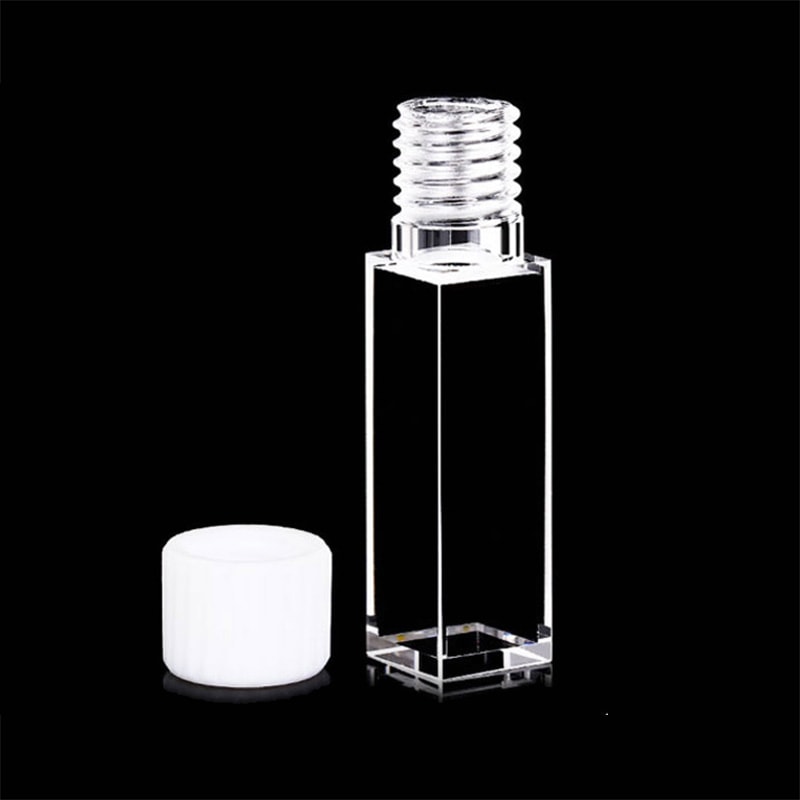Improving Research Performance with the Correct Cuvette Size
Improving Research Performance with the Correct Cuvette Size
Blog Article

The Advantages of Cuvettes and Quartz Vials in Clinical Study
In clinical research, the precision and reliability of sizes are paramount, especially in fields like spectroscopy, substance analysis, and biology. One critical component that ensures accuracy in these reports could be the cuvette, specially cuvette size. Understanding the advantages of cuvettes and the benefits of using quartz vials may considerably impact the results of experiments and laboratory work.
Precision in Spectroscopy
Cuvettes are essential for holding liquid samples in various logical instruments, most notably spectrophotometers. These devices assess the absorbance or transmission of mild through a sample, and the cuvette provides whilst the package for the sample all through analysis. The measurement and product of the cuvette enjoy a crucial position in ensuring the precision of the measurements. Quartz vials, specifically, provide extraordinary optical clarity, allowing for precise light indication across a wide range of wavelengths, including uv (UV) light. That makes quartz vials a fantastic selection for spectroscopic experiments, where detail is critical.
Durability and Compound Weight
Quartz vials stick out because of their longevity and weight to severe chemicals. Unlike plastic cuvettes, quartz vials are less likely to degrade or respond with compounds in the trial, ensuring that the results of the test remain unaffected by possible contamination. This quality makes quartz vials specially useful in settings wherever hostile solvents or large conditions are involved. Their ability to endure severe conditions without diminishing the integrity of the test is one of many principal causes they are favored in several laboratory applications.
Accuracy in Measurement and Form
The size of a cuvette is not a one-size-fits-all situation. The dimension of the cuvette, such as for instance its route length, impacts the quantity of the taste and the total amount of light that passes through. Choosing the correct cuvette size for the specific experiment ensures that the answers are not manipulated due to below or over-concentration of the sample. Quartz vials come in a variety of sizes and forms, allowing analysts to choose the most suitable alternative on the basis of the demands of these experiment. This mobility plays a role in more exact information and enables better get a handle on around experimental conditions.
Visibility and Mild Sign
Quartz is known for its exemplary visibility, particularly in the ultraviolet (UV) and visible mild spectra. This makes quartz vials perfect for used in tools that require obvious visual trails, such as UV-Vis spectrophotometers. The superior gentle transmission houses of quartz make certain that the mild moves through the taste with minimal scattering or assimilation, resulting in more precise readings. For tests that need high detail, quartz vials give a distinct advantage around other materials.
Long-Term Reliability
When working in study laboratories, it is crucial to own trusted tools that maintain their reliability over time. Quartz vials are not only chemically tolerant but additionally highly durable, meaning they are less likely to knowledge use and tear. That long-term reliability ensures that scientists may use quartz vials for prolonged times without worrying about destruction or the requirement for repeated substitutes, causing cost-effectiveness in the long run.
To conclude, equally cuvettes and quartz vials offer a selection of advantages that improve the quality and accuracy of laboratory experiments. From their remarkable optical clarity with their compound resistance and longevity, these tools are fundamental in medical research. By selecting the right cuvette measurement and using quartz vials, researchers may ensure specific measurements and obtain more reliable results inside their studies. Report this page